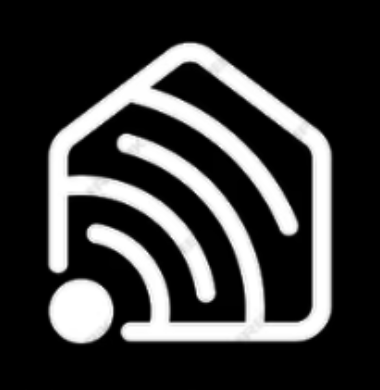DIY Smart Home Setup for Frisco, TX Homeowners: Step-by-Step Guide
Smart home technology is no longer reserved for luxury homes or tech enthusiasts — it’s now accessible to nearly every homeowner. Whether you want to control your lights from your phone, receive alerts from your security system, or automate your thermostat for energy savings, at Frisco Smart Home Haven is here to share step-by-step guidelines so you can set up your own system with confidence.
Step 1: Assessing Your Smart Home Needs
Before installation, it's crucial to evaluate your specific requirements. We recommend starting with a thorough assessment of your daily routines and lifestyle.
Consider which areas of your home you'd like to automate. Common options include:
• Lighting control
• Security systems
• Climate management
• Entertainment systems
• Motorized shades
Think about how you want these systems to interact. For example, you might want your lights to dim automatically when you start a movie.
Budget is another important factor. Smart home solutions range from basic setups to comprehensive systems. Determine how much you're willing to invest in this technology.
Don't forget about future needs. A scalable system allows for easy additions as your requirements evolve. We suggest planning for potential expansions from the start.
Compatibility is key. Ensure the devices you choose work well together. This creates a seamless experience and prevents frustration down the line.
Lastly, consider your technical comfort level. Some systems are user-friendly, while others may require professional management. We can help you find the right balance for your skills and preferences.
💡 Frisco Tip: Many homes here are two-story and spread out. If your Wi-Fi router is in one corner of the home, you may need to plan for a mesh network to reach all areas.
Step 2: Choose a Smart Home Platform
A “hub” or platform acts as the brain of your system. Several platforms dominate the smart home market, each with its strengths.
- Amazon Alexa and Google Home are widely used for voice control and basic automation. They offer extensive device compatibility and user-friendly interfaces.
- Apple HomeKit provides a secure, privacy-focused option for iOS users. It integrates seamlessly with Apple devices but may have more limited third-party support.
- Control4 and Crestron cater to high-end installations, offering professional-grade systems with advanced customization. These platforms excel in managing complex setups and large homes.
- For DIY enthusiasts, Home Assistant is an open-source platform that allows for extensive customization and local control. It supports a wide range of devices and protocols.
Choose one that works with the devices you want and matches your comfort level with technology.
Step 3: Select Your Devices
Once you’ve picked a platform, look for compatible devices such as:
- Smart Lighting – Bulbs, switches, and dimmers you can control remotely.
- Smart Thermostats – Automate heating and cooling schedules.
- Security Systems – Video doorbells, cameras, smart locks.
- Smart Plugs – Turn traditional appliances into smart devices.
- Entertainment Systems – Speakers, TVs, and streaming hubs.
💡 Frisco Tip: If you live in a newer subdivision, check with your HOA before installing visible devices like exterior cameras.
Step 4: Strengthen Your Network
Your Wi-Fi is the foundation of your system. A weak or spotty signal will cause delays and frustration.
- Consider a mesh Wi-Fi system for full coverage.
- Use dual-band routers to handle multiple devices.
- Place access points strategically in large or multi-level homes.
Step 5: Install and Configure Your Devices
Most smart devices are designed for easy installation.
- Follow the manufacturer’s instructions carefully.
- Install companion apps for setup and customization.
- Create automation “scenes” (e.g., “Movie Night” dims the lights and starts your sound system).
- Test each device to ensure it’s working as intended.
Step 6: Secure Your Devices
Smart devices can be vulnerable if not properly protected.
- Use strong, unique passwords for each device and account.
- Enable two-factor authentication when available.
- Keep firmware and apps updated.
Estimated Costs for a DIY Smart Home in Frisco TX
| Feature | Typical DIY Cost |
|---|---|
| Smart Lighting Kit | $100-$300 |
| Smart Thermostat | $150-$250 |
| Video Doorbell | $100-$250 |
| Security Cameras | $50-$200 |
| Mesh Wi-Fi System | $200-$500 |
💡
Frisco Tip: Many big-box stores in the area offer price matching — useful when buying multiple devices.

Pros and Cons of a DIY Setup
Pros:
- Lower cost than hiring a professional.
- Learn how everything works.
- Full control over customization.
Cons:
- Time-consuming, especially for complex systems.
- Requires troubleshooting skills.
- May lack the polish of a professional installation.
When to Call a Professional
If you want a fully integrated system that works flawlessly without the learning curve, a professional installer can save time and ensure optimal performance. They can also handle advanced features like whole-home audio, structured wiring, and custom programming. If you do go this route and need assistance,
📞Contact us Today!
Final Thoughts
Creating a DIY automation in Frisco is absolutely possible — and can be a fun project for tech-savvy homeowners. With the right planning, tools, and devices, you can enjoy modern conveniences and increased security without breaking the bank.
However, if you’d rather skip the trial-and-error and enjoy a perfectly integrated system, Frisco Smart Home Haven is here to help. We design and install tailored solutions for comfort, convenience, and peace of mind.

